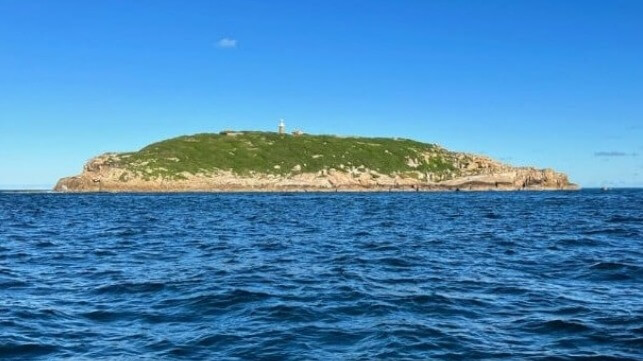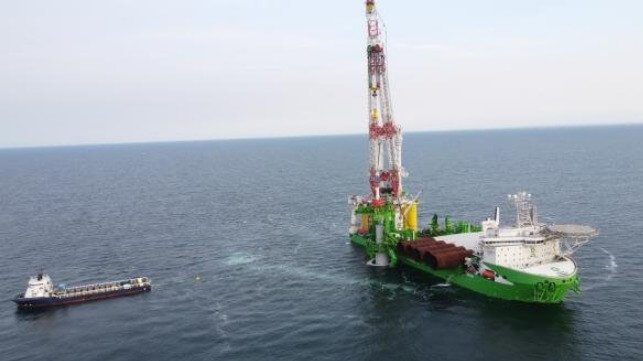Global commodities trader Trafigura group is joining the growing list of pioneers committing to ammonia-fueled vessels. The company has ordered four dual-fueled product tankers for LPG or ammonia transport as part of the group’s growing efforts to decarbonization. With the vessels scheduled for delivery in 2027, Trafigura will be at the forefront of ammonia-fueled propulsion.
The company provided only a few basic details reporting that it ordered four medium gas carriers capable of using ammonia for propulsion when they are delivered. The vessels, which will be used to transport ammonia or LPG, will be built at HD Hyundai Mipo Dockyard in Ulsan, South Korea. Hyundai reported the order is valued at $286 million.
In placing the order, they join a select group of shipping companies that have already moved forward on ammonia while the engine technology is still being perfected and the infrastructure for bunkering is just being explored. Earlier this year Fortescue and Singapore’s Maritime and Port Authority reported the first-ever ammonia bunkering and tests on the Fortescue’s converted offshore supply vessel renamed Fortescue Green Pioneer. Worldwide, DNV calculates that there are just 19 vessels on order for ammonia-fueled propulsion with most of the orders for bulkers and only two gas carriers, so far. Only two shipyards, Hyundai Mipo and Qingdao Beihai Shipbuilding in China have received orders for ammonia vessels.
“We are excited to embark together with HD Hyundai Mipo on this ambitious project which supports our commitments to decarbonizing shipping and will help us to develop the global low-carbon ammonia bunkering infrastructure needed for zero-carbon shipping to become a reality,” said Andrea Olivi, Head of Wet Freight for Trafigura.
Trafigura is one of the world’s largest charterers of vessels, responsible for more than 5,000 voyages a year with around 400 ships currently under management. The company highlights its commitment to helping to develop low-carbon fuels and vessels while highlighting the range of programs it is testing. They purport to be one of the few operators to have tested a full range of alternative shipping fuels including LNG, methanol, LPG, and biofuels on its owned and chartered vessels.
Investments are also being made by Trafigura in wider efficiency measures such as silicone hull coating, wake equalizing ducts, ultrasonic propeller antifouling technology, and continuous underwater hull cleaning and propeller polishing. It has also co-sponsored the development of a two-stroke engine by MAN Energy Solutions that can run on green ammonia and is investing in onboard carbon capture technology.
Trafigura looks to lead the industry by example. They are committed to reducing the carbon intensity of its shipping fleet by 25 percent by 2030.
 The maritime industry is facing an ever-tightening regulatory environment in its efforts to achieve its ambitious net-zero target by the middle of this century. For meaningful progress to be achieved, the industry needs two things: practical solutions, together with a detailed understanding of the actual impact of various long and short-term measures on the industry’s future decarbonization pathway.
The maritime industry is facing an ever-tightening regulatory environment in its efforts to achieve its ambitious net-zero target by the middle of this century. For meaningful progress to be achieved, the industry needs two things: practical solutions, together with a detailed understanding of the actual impact of various long and short-term measures on the industry’s future decarbonization pathway.
This extends beyond purely technical considerations, encompassing the entire value chain, and accounting for the broader economic context in which the transition is taking place. It also requires approaching the question using the right lens, by considering shipping’s “greenhouse gas (GHG) budget” to 2050, rather than solely focusing on the emissions levels at the end of the journey. To limit global temperature increases to 1.5 degrees Celsius, in line with the Paris Agreement, we need to account for all emissions released into the atmosphere until the point of carbon neutrality is reached.
Putting those principles into practice, Bureau Veritas (BV) has recently published a report outlining potential decarbonization trajectories for the maritime industry through five distinct scenarios, each considering several parameters such as socio-economic forecasts for the evolution of demand for maritime transport, the possible speed for the uptake of green fuels, and technical efficiency improvements in shipping.
Our study reveals that for shipping to keep within its carbon budget, all available levers will need to be actioned at different points in time over the next three decades.
A central role for energy efficiency
In practice, our study demonstrated two clear findings. The first is that operational and technical efficiency measures and energy-saving technologies need to be actioned in the short term, when emissions are at their highest. This will involve embracing practical solutions such as reducing speed, voyage optimization, weather routing, energy-saving devices, and wind-assisted propulsion, which will all help to drive decarbonization.
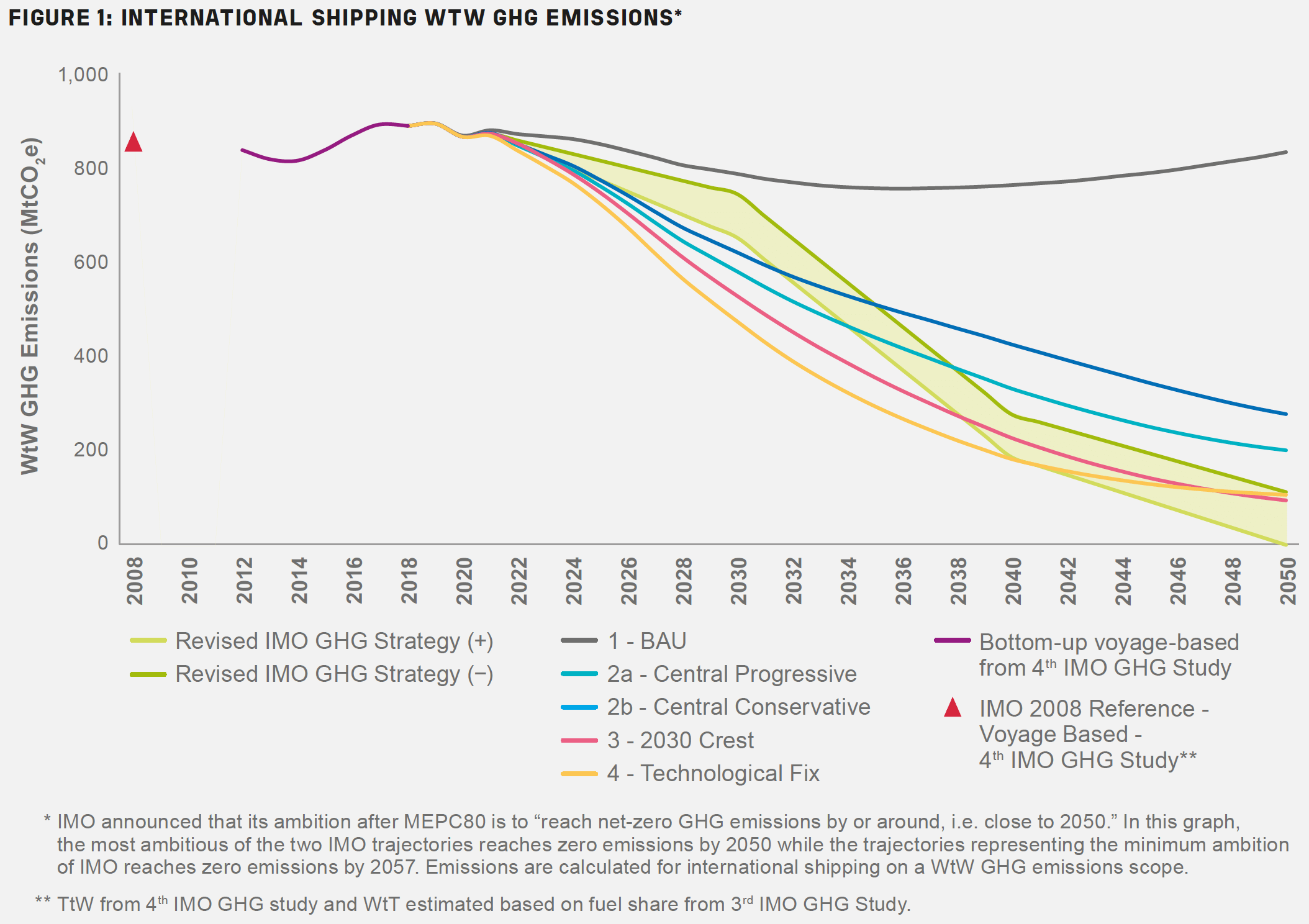
Our modeling confirmed the potential hefty cumulative impact of operational and technical efficiency measures in keeping shipping within its “GHG budget” to 2050. BV’s simulations show that without action to reduce speed or waiting time - while ocean transportation volumes grow - GHG emissions would be 92% higher by midcentury, with 44% more emissions over the period than if these levers had been actioned.
Although future fuels are widely acknowledged as the preeminent solution, the limited availability of biofuels and e-fuels generated from wind and solar sources to replace fossil fuels reflects the monumental investment required for adoption at scale. The industry cannot afford to wait for innovative fuel and propulsion technologies to achieve commercial viability before taking action.
A supply chain challenge
Moving the needle on fuel production requires pragmatic solutions to unlock the necessary investments to reach the required scale. As such, the second clear finding from our research established the importance of embracing energy insetting as a means of stimulating the at-scale production of renewable and low-carbon fuels, connecting fuel buyers and sellers across the value chain, while also addressing the cost disparity between conventional and very-low-carbon fuels.
The widespread adoption of low-carbon fuels by the shipping industry will entail significant costs to shipowners and operators compared to fossil fuels. However, energy insetting provides a solution that can help bridge the price gap, whilst making a tangible impact on Scope 3 emissions across value chains.
Digital certificates, known as insets, are issued according to the level of emissions savings achieved using renewable and low-carbon fuels, compared to conventional fossil fuels. These emissions are evaluated using a proof of sustainability (PoS) delivered by an independent body to attest to the sustainability credentials of a given fuel. These insets can then be exchanged using a book-and-claim methodology, which allows the certificates to be verified and exchanged digitally, on a dedicated registry.
Unlike offsets, insets are internationally recognized as concrete reductions realized within the supply chain. So, rather than engaging in compensation through external schemes such as reforestation, insets improve the net environmental performance of the industry as a whole, based on reliable assurance verification. This involves practical measures to monetize the estimated GHG emission savings enabled by using renewable or low-carbon marine fuels and will enable end consumers concerned with sustainable sourcing and supply to exercise their purchasing power to guide upstream decisions.
Ultimately, the development of different iterations of energy insetting could be a vital tool the industry needs to send clear market signals to stimulate the production of renewable and low-carbon fuels at scale.
Furthermore, the use of digitalization to record and validate these emissions savings has the dual benefit of connecting a variety of stakeholders throughout the supply chain. It removes the geographical barriers that arise from sourcing through physical supply chains, bringing the supply and demand sides of low-carbon fuel development together, uniting energy providers, carriers, forwarders and cargo owners, as well as the end consumer. The long-term emergence and efficiency of markets rely on trust and the circulation of information.
It is widely acknowledged that immediate and impactful action needs to be taken to achieve the maritime sector’s decarbonization targets, but these goals will not be achieved without unprecedented levels of collaboration and consensus between different stakeholders across the entire value chain.
While this level of cooperation may strike many within the industry as counterintuitive, it is only by embracing benefit-sharing models – such as energy insetting methodologies – that the industry will achieve its net-zero ambition.
Paul Delouche is the Strategy, Acquisitions, and Advanced Services Director at Bureau Veritas Marine & Offshore.
The opinions expressed herein are the author's and not necessarily those of The Maritime Executive.
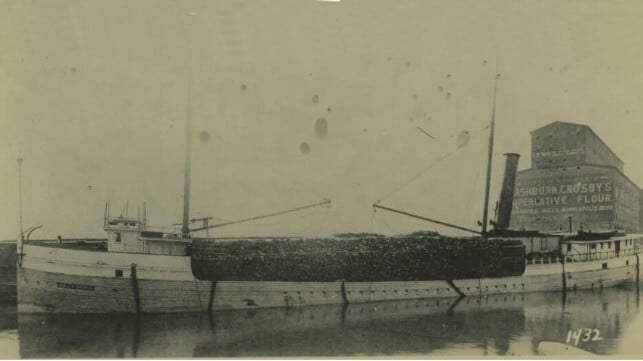
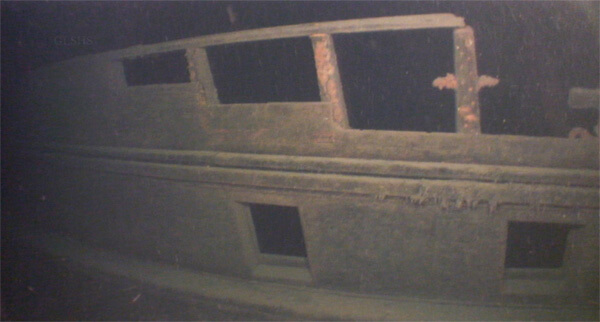
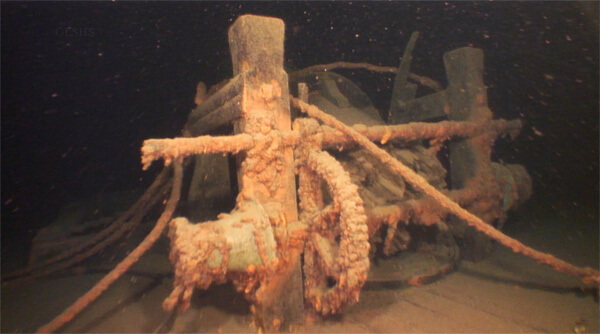
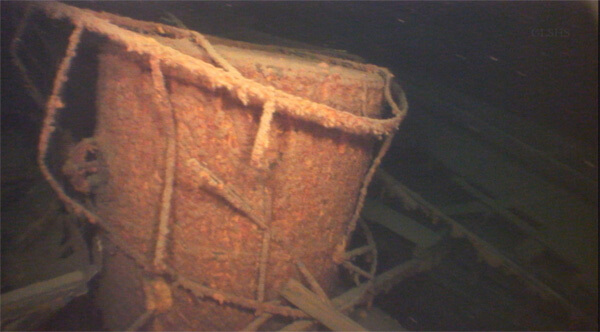
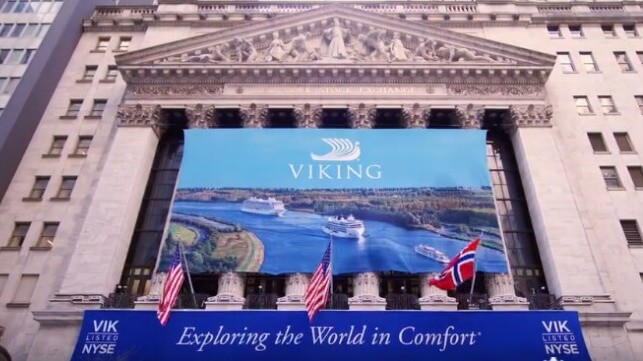
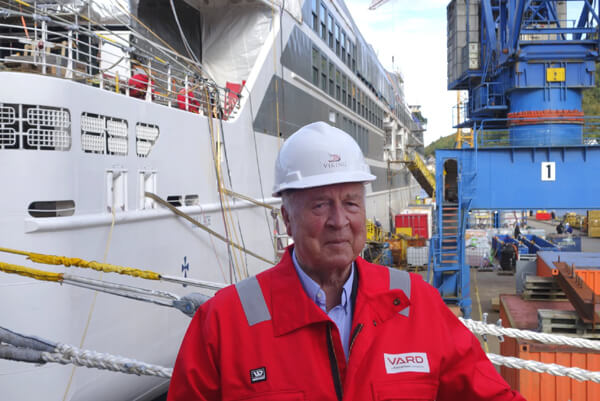
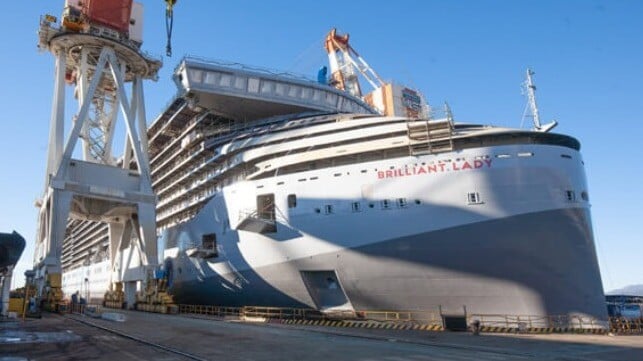
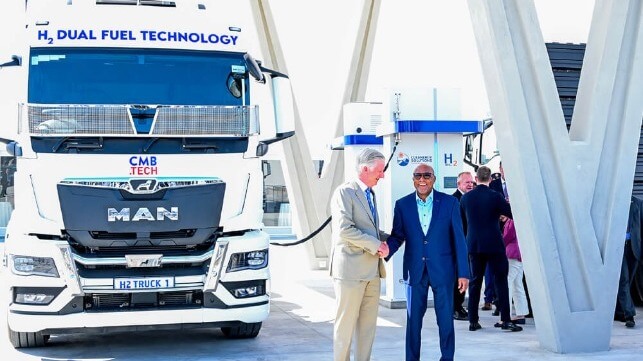
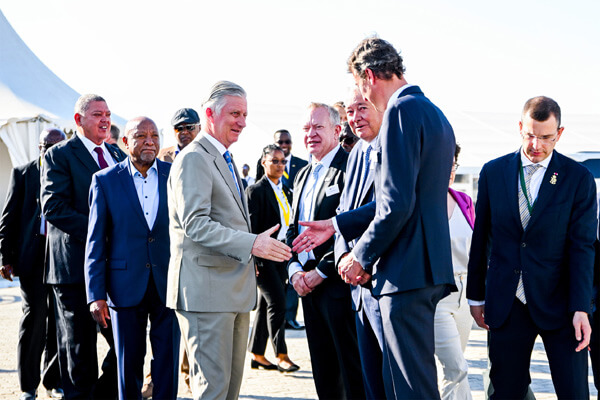
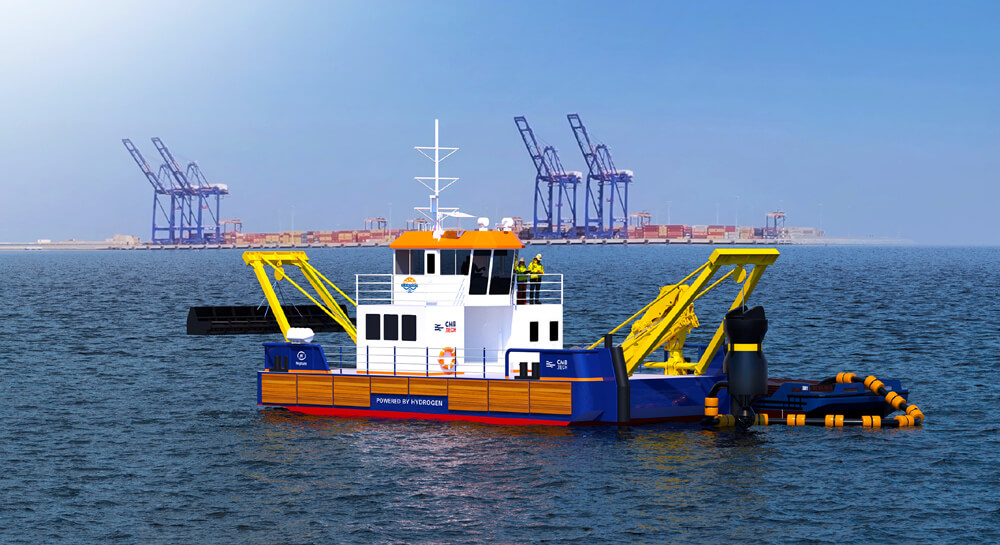
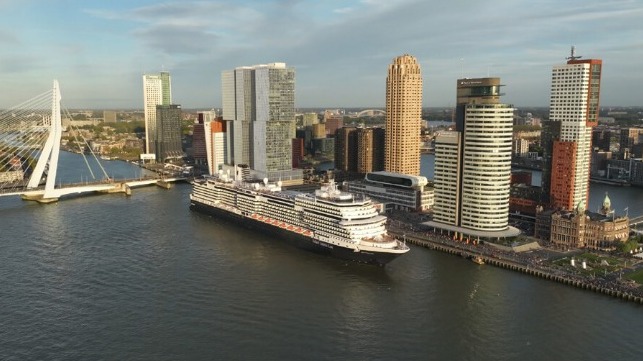
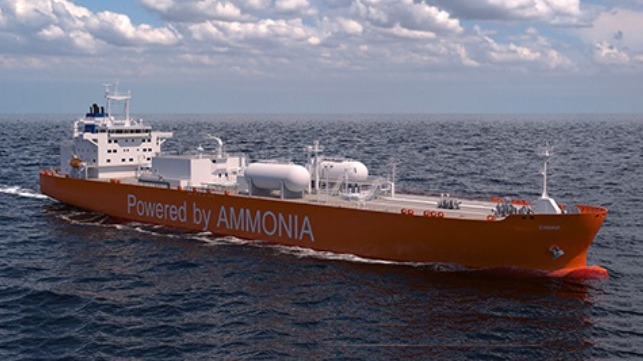
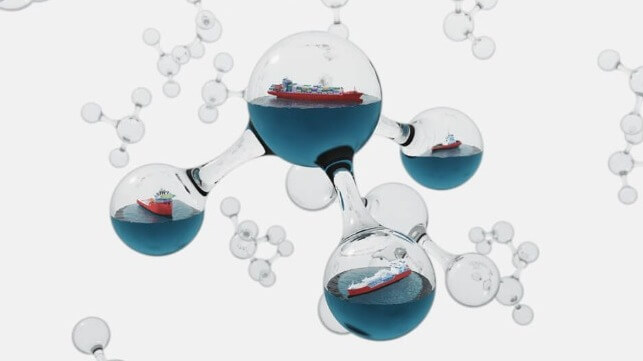
 The maritime industry is facing an ever-tightening regulatory environment in its efforts to achieve its ambitious net-zero target by the middle of this century. For meaningful progress to be achieved, the industry needs two things: practical solutions, together with a detailed understanding of the actual impact of various long and short-term measures on the industry’s future decarbonization pathway.
The maritime industry is facing an ever-tightening regulatory environment in its efforts to achieve its ambitious net-zero target by the middle of this century. For meaningful progress to be achieved, the industry needs two things: practical solutions, together with a detailed understanding of the actual impact of various long and short-term measures on the industry’s future decarbonization pathway.
